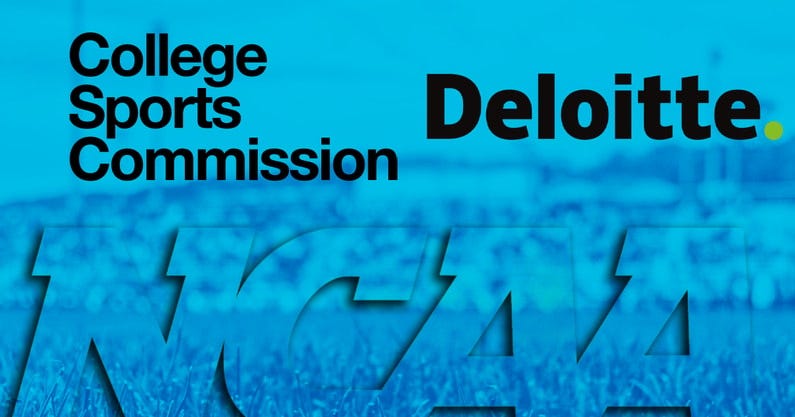
There are several criteria on which the NCAA’s rollout of the House Settlement should be based. In the same way any company would roll out a new product offering, or would mention an innovative process change, the NCAA was ushering in a completely new way of doing business. Such a transformative new way of doing business for a company the size of the NCAA would require time, attention, sensitivity, strategic implementation, etc. of at least a dozen people for a company of mere mortals. But the NCAA seemingly did it with a couple overseas employees and the budget of a church soup kitchen.
Let’s dive deeper and give out some hard-earned, well-deserved grades:
Clarity – F: Beyond the evident fact that schools could pay players, how those payments should be administered was widely uncertain and remains unclear. One conference decided to be the conduit through which payments were administered. Many athletes were required to make new bank accounts. International athletes had a flat mandatory 30% withheld for taxes while domestics had the option to withhold taxes, regardless of projected tax brackets. No continuity across the NCAA so that schools could benefit from the learnings and lessons experienced. No best practices or proactive FAQs (for questions of substance). Very unclear and leaving schools to their own resources, their own devices, and their own shortcomings. The biggest losers: The athletes. The second biggest losers: The burnt out administrators. The biggest winner: The NCAA.
Communicativeness – F: An implementation of this scale deserves site visits, infographics, help lines, roll-out guides (like this limp two-pager), on-site, etc. but schools received mostly the mandatory NCAA bylaw updates of how they plan to police schools Heavy on enforcement, light on support – The NCAA way. The NCAA told the conferences what to do, the conferences told the schools what to do, and basically none of the conferences did what other conferences did, and even within conferences, many schools conducted payout volumes, timing, sport distribution, etc. differently. Of course, the NCAA, which was long seen as the governing body for college athletics, coughed up its authority to enforce NIL to the CSC (College Sports Commission). The cost of this (hopefully) new and improved enforcement entity: Not clear and not known despite persistent asking by many parties. My guess: $30 million per year, but I have no idea just how much bloat they are carrying around. The fees for Deloitte, FGS Global, LBi Software, and the legal resources standing by ready to be deployed are indeed ample. $30 million could be high, or it could be low, but the good thing is that the schools (which could easily be giving the money to the players) will be able to pay fully and completely as I’m sure, just like a taxi, the meter will keep running. If you want to try and comprehend how much money the NCAA is paying Deloitte for consulting and administering the NIL Go platform, consider this: Deloitte already publicly acknowledged that the value of talent can’t simply be reduced to numbers. Oh, but it can, the question is just how many number$....$$$.
Execution – F-: That’s an F-, not a keystroke error. There’s lots to not like about the rev share roll out, but it called be called the rev share rule out because of the dismissal and life-altering outcomes inflicted on dozens of athletes per school. Walk-on athletes were cut proactively, schools proactively reallocated resources forcing the transfer of many athletes while others were simply left without a roster spot because their school didn’t wish to retain their services and knew not of how to protect all athletes from foreseeable consequences. Athletic department staff members were forced to stay late to help coaches, late to help players, and paid the same as if they were on vacation. All part of the job, I guess, but here’s what I do know, good athletic administrators are leaving the profession at an alarming rate. That’s not good for anyone. But with incompetent and/or self-serving leadership from the NCAA, what else is one to do?
Legality – F-: A definite F- for legality too as this solution was hammered into place in the face of Title IX violations, anti-trust & anti-competitive behavior, and the compromising of 12%-15% of the NCAA’s athletes (internationals). Some lawsuits are already filed, others are brewing, and the first two weeks already saw a lack of alignment in terms of what a “valid business purpose” according to the powers that be. There are so many legal shortcomings from the revenue sharing roll out that I’m forced to think that everything going forward will be a proverbial “can-kick” much like the House Settlement case predecessor involving Ed O’Bannon was. How long can the NCAA get away with doing as little as possible for as many as possible (from whom the NCAA is benefiting).
Overall – D: I’m just kidding. It’s an F. Not a D. Not even close. A “D” is classically defined as 60%-69%. The NCAA got like an 18%. Like an inbred kid who rarely shows up for class, doesn’t turn in assignments, doesn’t participate, and only rarely takes tests without having any preparation. Now the argument could certainly be made that the NCAA didn’t have enough time to comprehensively detail the who, where, when, what, how, and why of the settlement. But in their bitter battle to the end to make things as difficult as possible on themselves and others, the NCAA cost their schools and administrators more time and energy than ever should have been needed. NCAAF used to be an acronym for college football, but it feels much more fitting for the quality of the entity these days.
- - -
I appreciate you reading and supporting this publication.
If you care to share this article or this Substack with others, I would greatly appreciate it. - James Tyler (J.T.) Elliott Rogan



